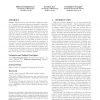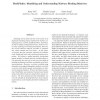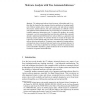271 search results - page 2 / 55 » Automatic analysis of malware behavior using machine learnin... |
SIGSOFT
2007
ACM
14 years 10 months ago
2007
ACM
Malware detectors require a specification of malicious behavior. Typically, these specifications are manually constructed by investigating known malware. We present an automatic t...
NDSS
2008
IEEE
14 years 3 months ago
2008
IEEE
Installing various hooks into the victim system is an important attacking strategy employed by malware, including spyware, rootkits, stealth backdoors, and others. In order to def...
SP
2010
IEEE
14 years 1 months ago
2010
IEEE
—To handle the growing flood of malware, security vendors and analysts rely on tools that automatically identify and analyze malicious code. Current systems for automated malwar...
ICPR
2010
IEEE
14 years 22 days ago
2010
IEEE
This paper presents a distributed Support Vector Machine (SVM) algorithm in order to detect malicious software (malware) on a network of mobile devices. The light-weight system mo...
CAV
2011
Springer
13 years 1 months ago
2011
Springer
Abstract. The underground malware-based economy is flourishing and it is evident that the classical ad-hoc signature detection methods are becoming insufficient. Malware authors ...



